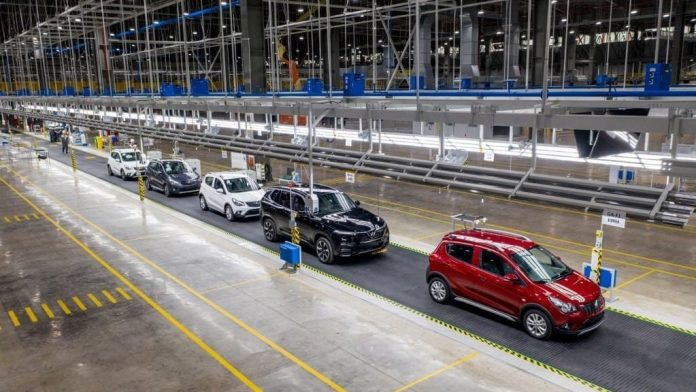A Vietnam-based startup car manufacturer, VinFast, claims to have built a “fully-digital” automotive factory with capacity for 250,000 cars a year, and flexibility to scale to more, from scratch in just 21 months. Similar greenfield developments, to establish new automotive manufacturing facilities, have taken twice as long to produce cars, it said.
The company, part of Vietnamese conglomerate Vingroup, teamed up with European car makers on the venture, and engaged German industrial outfit Siemens to organise its digital capabilities. The facility will be used to produce vehicles under the VinFast brand, as well as for other car brands, it is understood.
The new 335-hectare site in Hai Phong, a major industrial city in the north of Vietnam, features a closed-loop manufacturing system which uses digital twins of the products, the production, and the performance of production and product.
The facility can be “easily” scaled up and down with demand, said VinFast, which claims to have established the country’s “first volume car manufacturer” and “first car brand” with the site’s opening.
The plant went live in June 2019 and has a total design capacity of 250,000 cars per year. The first vehicles have been e-scooters, compact cars, sedans, and SUVs. These will be followed by battery electric passenger cars as well as electric buses, according to those involved.
“The digital twin creates new insights, thanks to the combination of physics-based simulations with data analytics in a fully virtual environment. This makes [it] possible to realise innovations faster and more reliably, while also requiring significantly fewer real prototypes,” said VinFast in a statement.
VinFast said other companies have been “inspired” to replicate its model for design and construction of new digital manufacturing sites. Siemens called it a “great example” of how the automotive industry is “driving” the digital transformation of manufacturing.
Bernd Mangler, senior vice president of automotive solutions at Siemens Digital Industries, commented: “We are proud that we contributed with our offerings to create the virtual and real production lines including the technology for continuous optimisations along the entire lifecycle of the equipment – and [at] record speed.”
Vingroup, which focuses on real estate, retail, and healthcare, has bought-in entirely to Siemens’ vision of digital operations with its VinFast plant. It has implemented digital automation equipment from the Germany firm for its manufacturing lines in all shops, from press shop to paint shop, body shop, sub-assembly shop and engine shop.
The “closed loop” concept sees data taken from every stage of production, and application (usage), and continuously fed back into the design and manufacturing process to iterate and improve vehicles coming off the production line.
VinFast has taken Siemens’ entire ‘Digital Enterprise’ portfolio. It is using Siemens’ Teamcenter collaboration software, which enables engineers from various phases of the design and production process to communicate edits and fixes in real-time, to ensure the physical production line flexes dynamically to the virtual designs and commands.
Siemens explained: “Teamcenter connects the digital twin with a consistent digital thread, which to help increase speed and flexibility of development, optimise manufacturing processes, and use the insights gained from product and plant operations to improve future performance.”
Siemens’ Xcelerator software is being used to create digital twins and simulations, and flow performance analytics back into the design process on Teamcenter. Its NX software for computer-aided design, manufacturing and engineering (CAD/CAM/CAE) is being used to write the digital twins of vehicles, as well as of factory setups and processes.
The whole production setup is orchestrated in Siemens’ Totally Integrated Automation (TIA) portal, part of a broader TIA concept for flexible and modular manufacturing, allowing for robots, conveyors, and other factory equipment to be yoked and driven in response to design and manufacturing inputs, and for automation tasks to be programmed across the facility, from the press shop through to final assembly.

